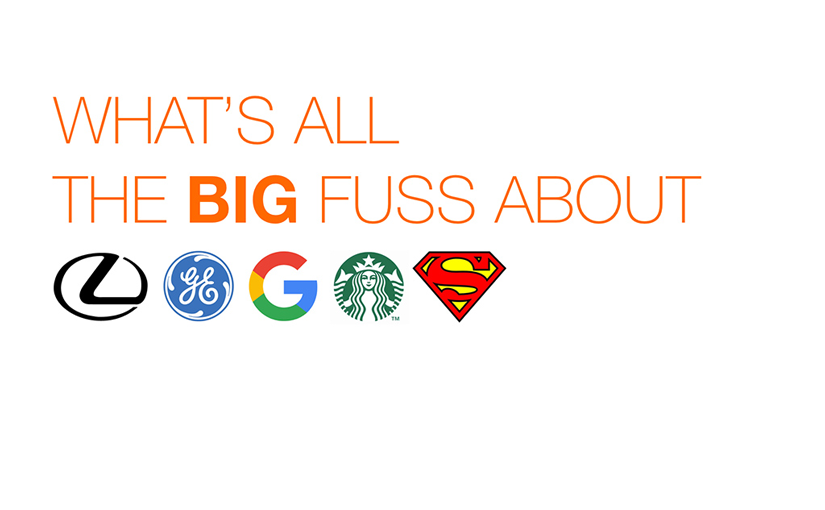What’s all the big fuss about logos?
January 4, 2018

What is the role of a logo? Where does the logo fit into the world of brand expression?
So often, during a branding exercise, I hear clients being more interested to see the logo when compared to other key aspects of a brand, which can be a well-formulated positioning statement, a compelling tagline, a name that commands action, a well-crafted typeface, a persuasive message and so forth.
Is a logo really the most important brand element? Is it really worthy of all the limelight (remember the controversial London 2012 Olympic logo!) it draws?
The answer is no!
In order to appreciate the role of the logo, it is critical to understand how a ‘brand’ is defined. In simple words, it is a perception that an organisation holds in the minds of the people. And the perception that we form of a brand, comprises of many different interactions that occur at many different levels, across many different senses. In fact, some of the greatest brands use multiple senses to build a distinct perception – not limiting them just to sight and hearing but extending it to smell, touch and even taste. Of course, the logo shape, it’s construction, it’s representation help consumers to associate the brand with specific attributes, but so do colours, fonts, the tone of voice, images, packaging and customer service to name a few.
Many define the logo as the face of the brand or a signature that functions as a promise or see it as a primary brand identifier. Although all the above interpretations are true, the more simplified and a more appropriate way to understand a logo is to see it as a brand identifier, however, along with all the other brand elements.
A good brand normally has one or two primary identifiers and a few secondary identifiers. Coca-Cola’s unique red colour stands as its most dominant identifier and it’s script font probably is the second most recognisable identifier. This holds true, as recently, as part of a campaign, the brand dropped its logo to pave the way for popular names of the people on its packaging, however, retained the brand colour. If one day, Coca-Cola decides to lose its signature red, would people still identify the brand? Mostly certainly not.

By approaching the logo as an identifier amongst a set of other brand identifiers, brands can be more imaginative, inspire more creativity and establish brand expressions that find differentiation in today’s very cluttered marketplace.
Let me put it in context through examples of brands that managed to challenge the status-quo:
Absolut Vodka
What comes to your mind when you think of Absolut? Is it their logo? I doubt that’s the case. Absolut’s primary identifier has been it’s unique and timeless packaging. It is considered that an 18th-century medicine flask found in an antique store in Stockholm gave inspiration to the iconic Absolut Vodka bottle. How cool is that?
Primary Identifier – Packaging

Muji
Let me make it tougher! What stands out when you think of Muji? Logo, Colours, Fonts? Service? In the world, where brands don’t cease to adorn their visual expression with graphics and frills, MUJI played it completely opposite. Inspired by simplicity, functionality and minimalism, it is MUJI’s distinct product design language that helps identify the brand. It is perhaps the only brand in the world that does not use its logo on any products.
Primary Identifier – Design language

Cadbury
While growing up in India, Cadbury for me, and for many others, was synonymous with chocolate and so was its signature purple packaging. Although its logo and the ‘glass and a half’ graphic are an important part of its visual expression, by far, the colour is the most sacred visual identifier. It would be a complete brand disconnect, if one day, Cadbury decided to turn red or orange.
Primary Identifier – Colour

The above brands explored a variety of visual elements to create differentiation, however, remained within the limits of visual expression. A number of brands such as Innocent and Old Spice created a distinct identification by emphasising on elements of verbal expression such as the Messaging and the Tone of Voice. And many hospitality brands are uniquely identified by the fragrance and scents they use to enrich their guest experience.
In today’s globalised world, where brands have to compete across markets, it is becoming more and more challenging to establish a brand identity that captivates its audience.
As they say, every challenge is an opportunity in disguise. Indeed the opportunity is immense. Yes, a logo is important, but it holds a limited ability to express emotion and convey meaning. There is an array of possibilities, and space for immense creativity and innovation, if, the brands, marketers and designers can push harder to think different, and think beyond the logo.
Rohit Banka
Strategy & Business Development Manager